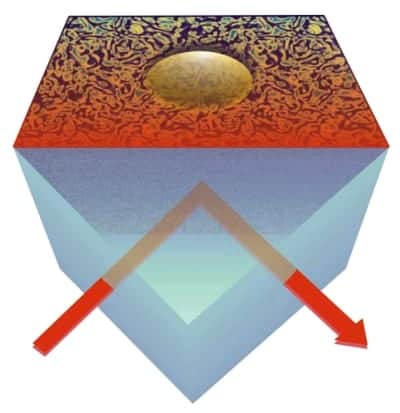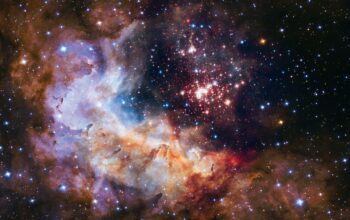The Casimir effect is a peculiar phenomenon stemming from the principles of quantum mechanics, evocatively illustrating the interplay between the subatomic and macroscopic realms. Despite being deeply rooted in quantum field theory, recent discourse has introduced an intriguing perspective: can quantum forces manifest classical behaviors? This idea has spurred numerous investigations, suggesting that contexts once relegated to quantum mechanics might become relevant in the classical domain. The exploration of the Casimir effect’s classicality not only promises a reimagining of physical interactions but also galvanizes interest across various scientific disciplines, unraveling the complexities of vacuum fluctuations and their manifestations.
To appreciate the implications of the Casimir effect transcending quantum boundaries, one must first grasp its fundamental underpinnings. The effect emerges when two parallel, uncharged conductive plates are brought exceedingly close to one another in a vacuum, resulting in an observable attractive force. This interaction arises from quantum fluctuations, which manifest as virtual particles perpetually appearing and disappearing even in a perfect vacuum. The energy associated with these virtual particles is unevenly distributed due to the spatial constraints imposed by the nearby plates, leading to a net force directed towards the plates themselves. The implications of this quantum phenomenon have generally been confined to the microscopic scale, fostering a rich array of theoretical and experimental inquiries into quantum forces.
However, the notion that these forces may exhibit classical characteristics invites a radical rethinking of how we understand fundamental interactions. The classical regime is typically governed by deterministic laws, wherein macroscopic objects behave predictably. In contrast, quantum mechanics revels in probabilistic outcomes, where particles exist in superpositions until observed. The intersection of these paradigms, particularly through the lens of the Casimir effect, challenges the rigid dichotomy between quantum and classical physics.
The classical interpretation of the Casimir effect posits that, under certain conditions, it could be possible to observe its manifestations in contexts traditionally aligned with classical mechanics. For instance, imagine scenarios where quantum fluctuations influence macroscopic systems, such as in materials science or nanotechnology. By engineering devices at the nanoscale, scientists can exploit the repulsive or attractive forces predicted by the Casimir effect to create novel applications ranging from microelectromechanical systems (MEMS) to quantum computing components.
Enhancing classical systems with quantum influences may yield transformative advancements in technology. Researchers have been exploring configurations where external fields or thermal environments induce conditions under which Casimir-like interactions become significant, thereby merging the realms of quantum and classical physics. For example, experimental setups involving optical cavities and resonators have begun to illustrate how quantum mechanical effects can shape behaviors typically expected in classical phenomena. The nuances of these interactions unveil opportunities for measuring tiny forces with unprecedented precision, a pursuit that could recalibrate our methodologies in experimental physics.
A noteworthy aspect of these developments revolves around the impact of temperature. In many classical systems, thermal fluctuations play a vital role in determining physical properties. Recent explorations into the temperature dependence of the Casimir effect have revealed that as systems evolve from quantum confinement to classical bulk behavior, thermal repercussions can significantly alter interaction strengths. At elevated temperatures, one could witness a dissociation of notions, where quantum forces retain influence in an ostensibly classical framework, thereby bending our conventional understanding of phase transitions.
This nuanced behavior allows physicists to probe the limits of established theories. The transition from quantum to classical is not merely a matter of scale; it encompasses a deeper interrogation of the foundational principles governing these interactions. This raises intriguing questions about the nature of reality itself. To what extent can classical laws accommodate quantum effects without succumbing to paradoxes? Is there an elusive synthesis awaiting discovery, one that harmonizes quantum mechanics with classical descriptions seamlessly?
As investigations advance, establishing a robust theoretical framework to elucidate where and how classicality arises from quantum phenomena becomes imperative. Quantum simulations and numerical analyses that bridge these disparate realms will be essential in delineating where classical approximations hold valid. These inquiries hint at a potential reframing of physical law, whereby traditionally stark boundaries dissolve, permitting a smoother coexistence of quantum and classical principles.
Moreover, this shift in perspective beckons interdisciplinary collaborations. The implications of a classical Casimir effect resonate across fields such as cosmology, where vacuum energy constitutes a cornerstone in theories of dark energy, or in materials science, where understanding the forces between molecules can lead to tailored matter at the nanoscale. It is within this interdisciplinary nexus that the most profound insights may emerge, driving forward inquiries that could redefine our grasp of fundamental physics.
In conclusion, the investigation into the Casimir effect evolving from a purely quantum phenomenon to exhibiting classical characteristics encapsulates an exciting frontier of modern physics. This nexus of quantum mechanics and classical behavior not only enriches our theoretical fabric but also augments practical applications that harness these interactions creatively. As researchers delve deeper into the layers of this phenomenon, a deeper understanding of our universe’s workings comes ever closer into reach. Such explorations invoke curiosity and promise unforeseen possibilities, suggesting that the boundaries of our current understanding are but gateways to an expansive realm of knowledge yet to unfold.












